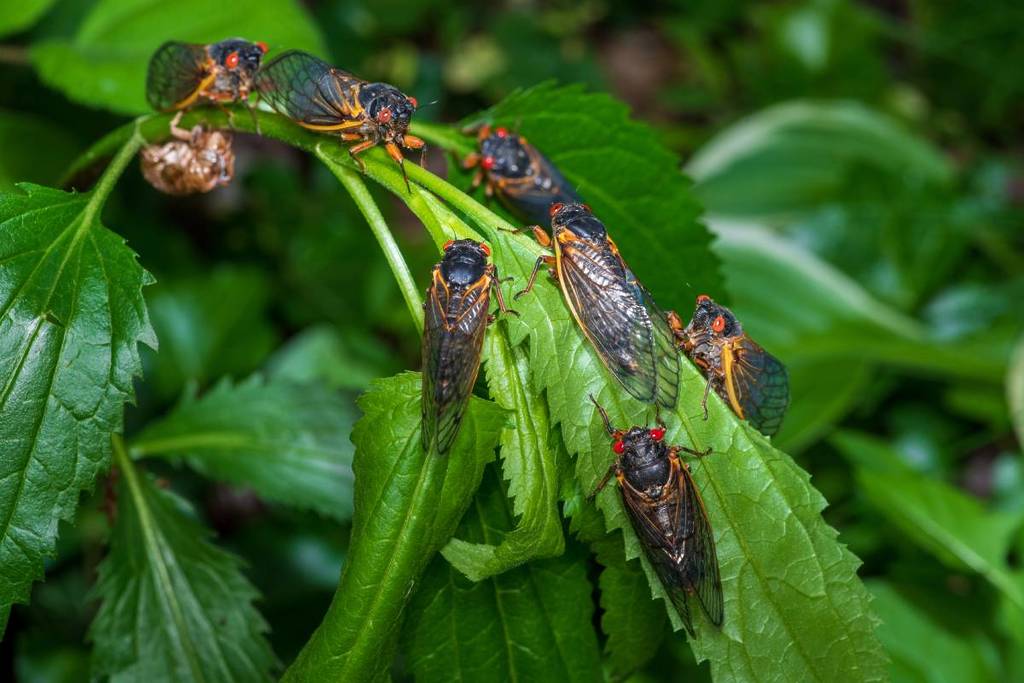Spring is bringing more than just flowers to Pennsylvania this year—it’s also bringing a noisy, yet fascinating, spectacle. One of the largest cicada broods in the region is expected to emerge in the coming months, and Pennsylvania will be right in the middle of it.
Cicadas, known for their loud buzzing and unique life cycles, are set to make their grand appearance in Pennsylvania, and it’s a sight many won’t soon forget. Brood XIV, a massive group of cicadas, will surface this spring, thrilling nature lovers and perhaps even catching some off-guard.
Where Will the Cicadas Appear?
According to CicadaMania.com, Brood XIV will appear in 13 states this year, including Pennsylvania. Along with Pennsylvania, this brood will spread to other states like Georgia, Kentucky, Massachusetts, Maryland, North Carolina, New Jersey, New York, Ohio, Tennessee, Virginia, and West Virginia. It’s expected to cover quite a wide region, bringing with it the unique buzz of millions of cicadas.
What Makes Brood XIV Special?
Brood XIV is one of the largest cicada broods, but it’s not the biggest. That title goes to Brood XIX. Cicadas from this brood will make their return to the eastern United States after 17 years of development underground.
The brood will include three different species of 17-year cicadas: Magicicada septendecim, Magicicada cassini, and Magicicada septendecula. These cicadas are part of a group of insects called “periodical cicadas,” known for their synchronized cycles, which occur every 13 or 17 years.
Cicadas: The Silent Builders of Nature’s Clock
The University of Connecticut notes that Brood XIV is one of the largest, but still second to Brood XIX. These cicadas belong to a genus called Magicicada. According to the University of Michigan, the group is well-known for their very specific life cycles, which make them appear only during certain years.
Although cicadas are often called locusts, they are not related. They may look unusual, but they are harmless to humans. These creatures spend most of their lives underground as nymphs before emerging to mate, lay eggs, and eventually die, making them a fascinating part of nature’s cycle.
The Importance of Cicadas in Nature
These insects are more than just a noisy spectacle; they play an important role in their ecosystem. As adults, they help fertilize the soil with their bodies, providing nutrients for plants. Additionally, their emergence provides food for a variety of predators, from birds to small mammals.
Despite their creepy appearance and loud buzzing, cicadas are harmless and even offer some surprising benefits. They also add a unique natural rhythm to spring as they emerge in large groups, creating one of the most intriguing phenomena in nature.
When Will Brood XIV Emerge?
Brood XIV cicadas are expected to begin emerging around mid-May. Their appearance will mark the beginning of a brief but loud season of cicada activity, which will last until late June. During this time, expect to hear their distinctive buzzing as they mate, and see them in large numbers across the regions affected by this brood.
For gardeners, this emergence might seem like a nuisance. Cicadas can damage plants by laying their eggs in tree branches. However, this damage is generally minor and doesn’t pose a serious threat to mature trees. Most of the time, their presence is just an interesting event for nature lovers to observe.
Prepare for the Cicada Invasion
For those living in Pennsylvania and other affected states, the arrival of Brood XIV means it’s time to prepare for a unique and loud spring. While these cicadas may be bothersome to some, they’re a great opportunity for others to witness a once-in-a-lifetime natural event. If you’re curious about the cicada phenomenon, here are a few things to keep in mind:
- Be Prepared for the Noise: Cicadas are famous for their loud, buzzing calls. This is how they attract mates, and it can be especially intense during peak emergence times.
- Don’t Panic: While their appearance might seem dramatic, cicadas are not harmful to humans. They won’t sting or bite, and they generally only live for a few weeks once they emerge.
- Watch for Egg-Laying Damage: Female cicadas lay their eggs in tree branches, which might cause some damage. If you have young trees or plants, keep an eye on them.
- Enjoy the Moment: The emergence of cicadas is a rare event, and it’s an opportunity to witness a truly unique moment in nature.
Cicadas and the Environment
While some may see cicadas as a nuisance, they serve a valuable role in the ecosystem. As mentioned earlier, their emergence helps to fertilize the soil and provide food for other wildlife. Their synchronized life cycle is also a fascinating example of nature’s intricate timing.
Scientists use the appearance of cicadas as a way to study ecological cycles and the impact of environmental factors on insect populations. The regular pattern of these insects emerging every 17 years gives experts insight into the health of ecosystems over long periods of time.
In a world that’s constantly changing, the appearance of Brood XIV is a reminder of the cycles and rhythms that exist in nature. So, as the cicadas begin to emerge in Pennsylvania and beyond, take a moment to appreciate the incredible spectacle that only happens once every 17 years.
Disclaimer – Our editorial team has thoroughly fact-checked this article to ensure its accuracy and eliminate any potential misinformation. We are dedicated to upholding the highest standards of integrity in our content.





More Stories
Second-Largest Cicada Brood in History Set to Emerge in Pennsylvania This Spring
Second-Largest Cicada Brood in History Set to Emerge in Pennsylvania This Spring
Second-Largest Cicada Brood in History Set to Emerge in Pennsylvania This Spring